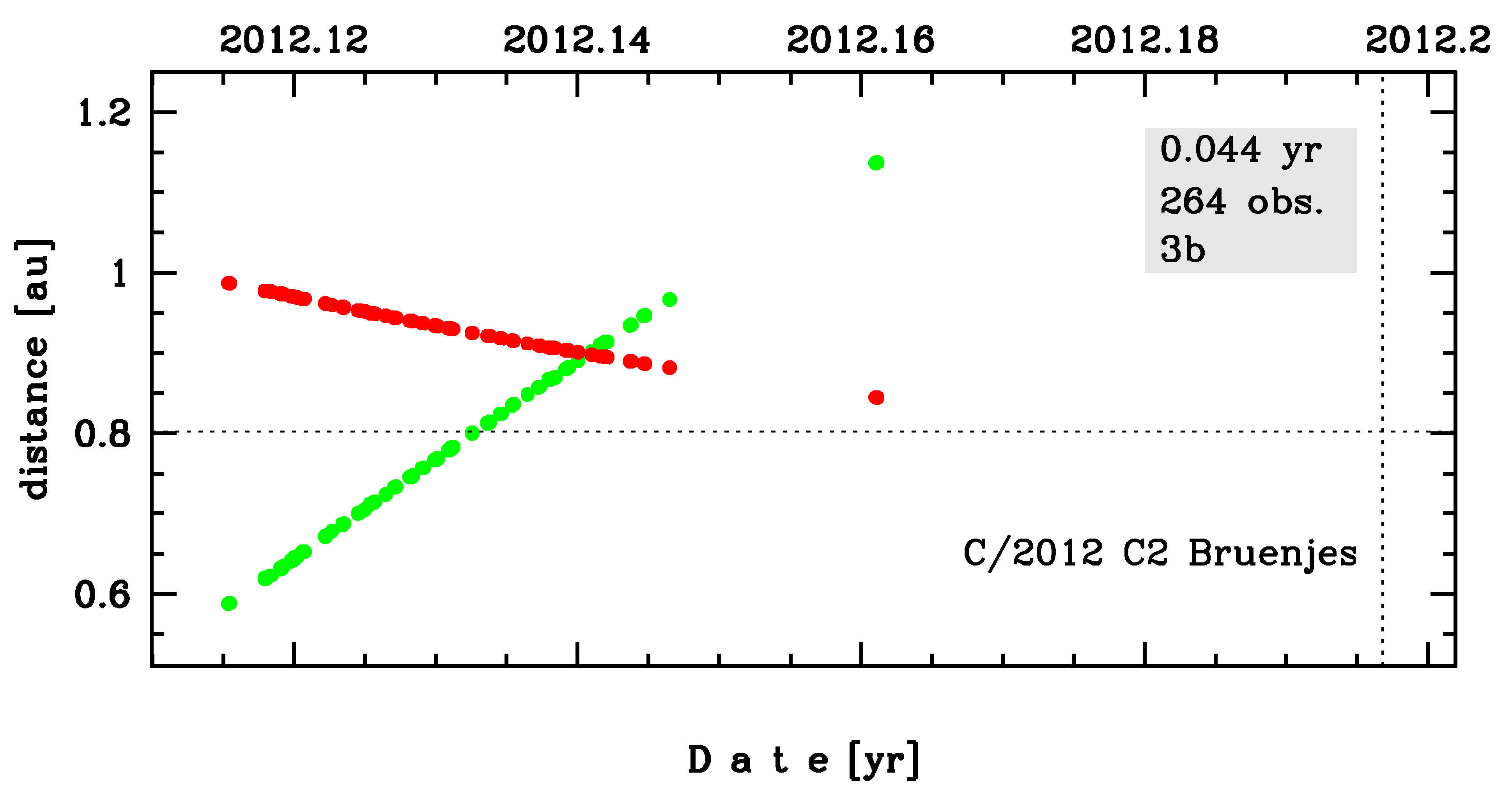C/2012 C2 Bruenjes
more info
Comet C/2012 C2 was discovered on 11 February 2012 by Manfred Bruenjes (Warrensburg, MO, USA), that is a month before its perihelion passage. It was observed only about two weeks until 27 February 2012.
Comet had its closest observed approach to the Earth on 27 January 2012 (0.193 au), about two weeks before its discovery.
Solutions given here are based on pre-perihelion data spanning over 0.044 yr in a range of heliocentric distances from 0.987 au to 0.845 au.
Original value of 1/a is negative; however within its uncertainty of about 3 sigma this comet can came from the Oort Cloud.
C/2012 C2 was observed only before peryhelion; future orbit is given here though it is not certain that this comet survived perihelion passage. See also Table 5 in Sekanina 2019.
See also Królikowska 2020.
Comet had its closest observed approach to the Earth on 27 January 2012 (0.193 au), about two weeks before its discovery.
Solutions given here are based on pre-perihelion data spanning over 0.044 yr in a range of heliocentric distances from 0.987 au to 0.845 au.
Original value of 1/a is negative; however within its uncertainty of about 3 sigma this comet can came from the Oort Cloud.
C/2012 C2 was observed only before peryhelion; future orbit is given here though it is not certain that this comet survived perihelion passage. See also Table 5 in Sekanina 2019.
See also Królikowska 2020.
| solution description | ||
|---|---|---|
| number of observations | 264 | |
| data interval | 2012 02 11 – 2012 02 27 | |
| data type | observed only before perihelion (PRE) | |
| data arc selection | entire data set (STD) | |
| range of heliocentric distances | 0.98 au – 0.84au | |
| detectability of NG effects in the comet's motion | NG effects not determinable | |
| type of model of motion | GR - gravitational orbit | |
| data weighting | YES | |
| number of residuals | 520 | |
| RMS [arcseconds] | 0.74 | |
| orbit quality class | 3b | |
| orbital elements (heliocentric ecliptic J2000) | ||
|---|---|---|
| Epoch | 2012 03 14 | |
| perihelion date | 2012 03 12.66581815 | ± 0.02100605 |
| perihelion distance [au] | 0.80203136 | ± 0.00023562 |
| eccentricity | 1.00226872 | ± 0.00070863 |
| argument of perihelion [°] | 62.700335 | ± 0.035611 |
| ascending node [°] | 118.003723 | ± 0.004560 |
| inclination [°] | 162.787047 | ± 0.002244 |
| reciprocal semi-major axis [10-6 au-1] | -2,828.72 | ± 883.21 |
